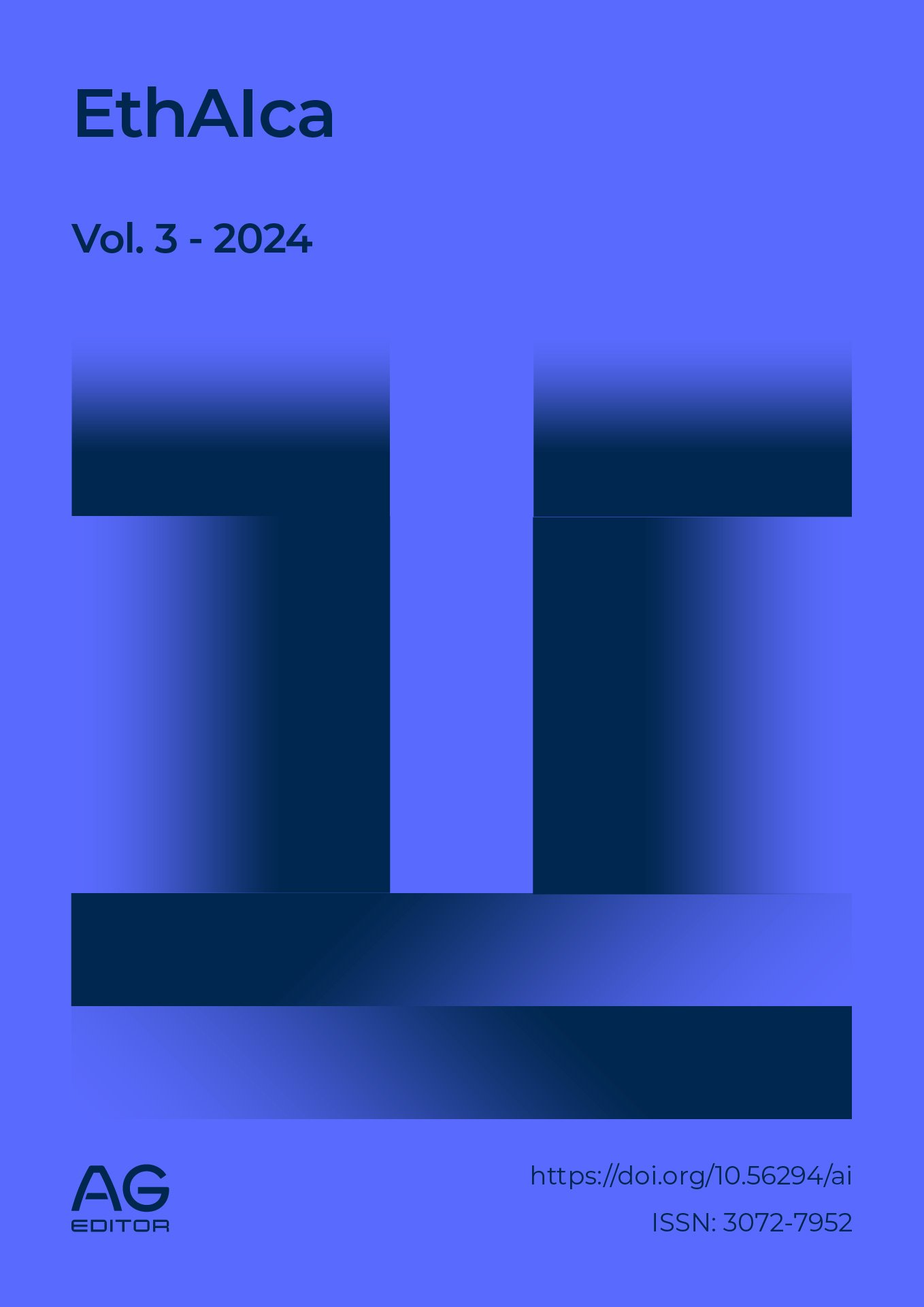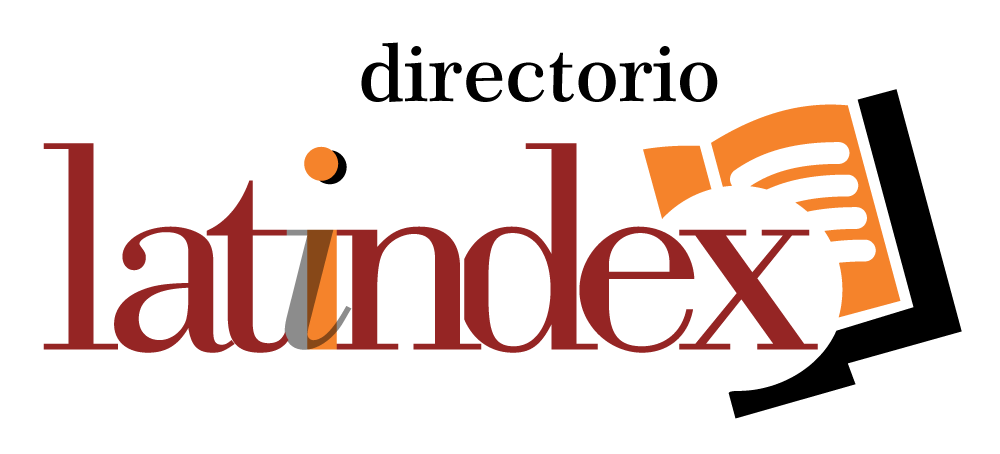Benefits and challenges of using AI in heritage education
DOI:
https://doi.org/10.56294/ai2024102Keywords:
Accessibility, digital divide, heritage education, ethics, artificial intelligenceAbstract
Introduction: This research analyzes the application of artificial intelligence (AI) in heritage education between 2019 and 2022, focusing on its benefits and challenges. Methodology: A bibliometric methodology combining quantitative and qualitative techniques is employed, using databases such as Web of Science, Scopus, and Google Scholar. The search strategy focuses on key terms such as AI, heritage education, benefits, and challenges. The data is processed with tools such as Bibliometrix and VOSviewer to identify trends, collaborative networks, and emerging themes. Results: The study provides a structured overview of the field, highlighting research gaps and future opportunities. Conclusions: The study provides a structured overview of the field, highlighting research gaps and future opportunities.
References
1. Noroña González Y, Colala Troya AL, Peñate Hernández JI. La orientación para la proyección individual y social en la educación de jóvenes y adultos: un estudio mixto sobre los proyectos de vida. Región Científica. 2023;2(2):202389. https://doi.org/10.58763/rc202389
2. Aller AJ, Pereira FJ, López R. Highlighting and solving analytical problems for hunting down hidden information from ancient papyri by surface techniques. Journal of Cultural Heritage. 2022;57:60-78. https://doi.org/10.1016/j.culher.2022.07.009
3. Bakkouri BE, Raki S, Belgnaoui T. The Role of Chatbots in Enhancing Customer Experience: Literature Review. Procedia Computer Science. 2022;203:432-7. https://doi.org/10.1016/j.procs.2022.07.057
4. Banerjee S, Cader FA, Gulati M, Capers Q. Racism and Cardiology: A Global Call to Action. CJC Open. 2021;3(12, Supplement):S165-73. https://doi.org/10.1016/j.cjco.2021.09.014
5. Romero Torres ME, Gamero De La Espriella P. Creación de un modelo tecno-pedagógico para el fortalecimiento de la lengua Emberá Katío mediante las costumbres ancestrales en la institución educativa el Rosario de Tierralta. Región Científica.2023;2(2):202398. https://doi.org/10.58763/rc202398
6. Calvo EG. Ethically governing artificial intelligence in the field of scientific research and innovation. Heliyon. 2022;8(2):e08946. https://doi.org/10.1016/j.heliyon.2022.e08946
7. Cattaneo A, Adukia A, Brown DL, Christiaensen L, Evans DK, Haakenstad A, et al. Economic and social development along the urban–rural continuum: New opportunities to inform policy. World Development. 2022;157:105941. https://doi.org/10.1016/j.worlddev.2022.105941
8. Elabd NM, Mansour YM, Khodier LM. Utilizing innovative technologies to achieve resilience in heritage buildings preservation. Developments in the Built Environment. 2021;8:100058. https://doi.org/10.1016/j.dibe.2021.100058
9. Ertz M, Boily É. The rise of the digital economy: Thoughts on blockchain technology and cryptocurrencies for the collaborative economy. International Journal of Innovation Studies. 2019;3(4):84-93. https://doi.org/10.1016/j.ijis.2019.12.002
10. Sánchez Castillo V, Peláez Rodríguez M, López de Parra L. Valoración del territorio para el fomento del turismo: una aproximación desde los actores en cuestión. Conocimiento Global. 2021;6(2):247-61. https://doi.org/10.70165/cglobal.v6i2.205
11. Chandu RS, Chandu SG. Understanding And Extrapolation Of Disruption For Engineering Education-Principles And Problems. Procedia Computer Science. 2020;172:1066-76. https://doi.org/10.1016/j.procs.2020.05.156
12. Acharya KP, Phuyal S, Chand R, Kaphle K. Current scenario of and future perspective for scientific research in Nepal. Heliyon. 2021;7(1):e05751. https://doi.org/10.1016/j.heliyon.2020.e05751
13. Ahmad MF, Ghapar WR. The Era of Artificial Intelligence in Malaysian Higher Education: Impact and Challenges in Tangible Mixed-Reality Learning System toward Self Exploration Education (SEE). Procedia Computer Science. 2019;163:2-10. https://doi.org/10.1016/j.procs.2019.12.079
14. Dubeux JC, Jaramillo D, Santos ER, Garcia L, Queiroz LD. Invited Review: Ecosystem services provided by grasslands in the Southeast United States⁎. Applied Animal Science. 2022;38(6):648-59. https://doi.org/10.15232/aas.2022-02296
15. Lehtola VV, Koeva M, Elberink SO, Raposo P, Virtanen JP, Vahdatikhaki F, et al. Digital twin of a city: Review of technology serving city needs. International Journal of Applied Earth Observation and Geoinformation. 2022;114:102915. https://doi.org/10.1016/j.jag.2022.102915
16. Bhimani A, Hausken K, Arif S. Do national development factors affect cryptocurrency adoption? Technological Forecasting and Social Change. 2022;181:121739. https://doi.org/10.1016/j.techfore.2022.121739
17. Bing Z, Qiu Y, Huang H, Chen T, Zhong W, Jiang H. Spatial distribution of cultural ecosystem services demand and supply in urban and suburban areas: A case study from Shanghai, China. Ecological Indicators. 2021;127:107720. https://doi.org/10.1016/j.ecolind.2021.107720
18. Li M, Wang Y, Xu YQ. Computing for Chinese Cultural Heritage. Visual Informatics. 2022;6(1):1-13. https://doi.org/10.1016/j.visinf.2021.12.006
19. Apergi LA, Bjarnadottir MV, Baras JS, Golden BL, Anderson KM, Chou J, et al. Voice Interface Technology Adoption by Patients With Heart Failure: Pilot Comparison Study. JMIR mHealth and uHealth. 2021;9(4). https://doi.org/10.2196/24646
20. Arpaia F, Basile S, Palma FD, Lorenzo PD, Gammella M, Palumbo C, et al. Music To Improve Health: The Cantico Project. Procedia Computer Science. 2022;203:759-62. https://doi.org/10.1016/j.procs.2022.07.113
21. Dwivedi YK, Hughes L, Baabdullah AM, Ribeiro Navarrete S, Giannakis M, Al Debei MM, et al. Metaverse beyond the hype: Multidisciplinary perspectives on emerging challenges, opportunities, and agenda for research, practice and policy. International Journal of Information Management. 2022;66:102542. https://doi.org/10.1016/j.ijinfomgt.2022.102542
22. Feijóo C, Kwon Y, Bauer JM, Bohlin E, Howell B, Jain R, et al. Harnessing artificial intelligence (AI) to increase wellbeing for all: The case for a new technology diplomacy. Telecommunications Policy. 2020;44(6):101988. https://doi.org/10.1016/j.telpol.2020.101988
23. Rodríguez Torres E, Pérez Gamboa AJ, Camejo Pérez Y. Distributed leadership education in the intervention in favor of the cultural heritage. Transformación. 2023;19(2):317-336. http://scielo.sld.cu/scielo.php?script=sci_arttext&pid=S2077-29552023000200317&lng=es&tlng=en
24. Guo J, Zhao X, Wei Z, Chen Z, Zhou H. Progress, problems, and key directions for establishing the first national park demonstration province in Qinghai, China. International Journal of Geoheritage and Parks. 2021;9(4):526-41. https://doi.org/10.1016/j.ijgeop.2021.11.010
25. Konys A. How to support digital sustainability assessment? An attempt to knowledge systematization. Procedia Computer Science. 2020;176:2297-311. https://doi.org/10.1016/j.procs.2020.09.288
26. Barrientos F, Martin J, Luca CD, Tondelli S, Gómez García J, Casanova EZ. Computational methods and rural cultural & natural heritage: A review. Journal of Cultural Heritage. 2021;49:250-9. https://doi.org/10.1016/j.culher.2021.03.009
27. Chang YC, Leung TK. Establishment of a basic medical science system for Traditional Chinese medicine education: A suggestion based on the experience of BIOCERAMIC technology. Journal of Traditional and Complementary Medicine. 2020;10(2):95-103. https://doi.org/10.1016/j.jtcme.2019.04.003
28. Ciurea C, Oprea SV. Digital Humanism and a Quantitative Analysis of Users Behavior in Virtual Exhibitions during the Pandemic Context. Procedia Computer Science. 2022;214:384-90. https://doi.org/10.1016/j.procs.2022.11.189
29. Gómez Cano CA. Education, urbanism, and gentrification: convergence of issues and solutions. Gentrification. 2023;10;1:1. https://doi.org/10.62486/gen20231
30. Antunes RF, Correia L. Virtual simulations of ancient sites inhabited by autonomous characters: Lessons from the development of Easy-population. Digital Applications in Archaeology and Cultural Heritage. 2022;26:e00237. https://doi.org/10.1016/j.daach.2022.e00237
31. Aviso KB, Demeterio FP, Janairo JI, Lucas RI, Promentilla MA, Tan RR, et al. What university attributes predict for graduate employability? Cleaner Engineering and Technology. 2021;2:100069. https://doi.org/10.1016/j.clet.2021.100069
32. Musumeci RE, Foti E, Rosi DL, Sanfilippo M, Stancanelli LM, Iuppa C, et al. Debris-flow hazard assessment at the archaeological UNESCO world heritage site of Villa Romana del Casale (Sicily, Italy). International Journal of Disaster Risk Reduction. 2021;64:102509. https://doi.org/10.1016/j.ijdrr.2021.102509
33. Peng Q, Zhou M. East Asian new techno-humanities report. New Techno Humanities. 2022;2(1):92-101. https://doi.org/10.1016/j.techum.2022.100003
34. Latha S. Vuca in Engineering Education: Enhancement of Faculty Competency For Capacity Building. Procedia Computer Science. 2020;172:741-7. https://doi.org/10.1016/j.procs.2020.05.106
35. Tápanes Suárez E, Bosch Nuñez O, Sánchez Suárez Y, Marqués León M, Santos Pérez O. Sistema de indicadores para el control de la sostenibilidad de los centros históricos asociada al transporte. Región Científica. 2023;2(1):202352. https://doi.org/10.58763/rc202352
36. Liang X, Liu F, Wang L, Zheng B, Sun Y. Internet of Cultural Things: Current Research, Challenges and Opportunities. Computers, Materials and Continua. 2022;74(1):469-88. https://doi.org/10.32604/cmc.2023.029641
37. Mantelero A, Esposito MS. An evidence-based methodology for human rights impact assessment (HRIA) in the development of AI data-intensive systems. Computer Law & Security Review. 2021;41:105561. https://doi.org/10.1016/j.clsr.2021.105561
38. Shakhovska N, Fedushko S. Data analysis of music preferences of web users based on social and demographic factors. Procedia Computer Science. 2022;198:730-5. https://doi.org/10.1016/j.procs.2021.12.314
39. McCarthy C, Sternberg T, Hoshino B, Banfill J, Enkhjargal E, Konagaya Y, et al. Preserving the Gobi: Identifying potential UNESCO world heritage in Mongolia’s Gobi Desert. Journal of Asia-Pacific Biodiversity. 2022;15(4):500-17. https://doi.org/10.1016/j.japb.2022.08.003
40. Sanabria Martínez MJ. Construir nuevos espacios sostenibles respetando la diversidad cultural desde el nivel local. Región Científica. 2022;1(1):20222. https://doi.org/10.58763/rc20222
41. Moser S, Fauveaud G, Cutts A. Montréal: Towards a post-industrial reinvention. Cities. 2019;86:125-35. https://doi.org/10.1016/j.cities.2018.09.013
42. Pistono A, Santos A, Baptista R. A qualitative analysis of frameworks for training through Serious Games. Procedia Computer Science. 2022;204:753-9. https://doi.org/10.1016/j.procs.2022.08.091
43. Raab CD. Information privacy, impact assessment, and the place of ethics. Computer Law & Security Review. 2020;37:105404. https://doi.org/10.1016/j.clsr.2020.105404
44. Araque Geney EA. Una mirada a la realidad económica y educativa de la mujer indígena Zenú: reflexiones desde el Cabildo Menor el Campo Mirella. Región Científica. 2023;2(2):202366. https://doi.org/10.58763/rc202366
45. Saldívar González FI, Aldas Bulos VD, Medina Franco JL, Plisson F. Natural product drug discovery in the artificial intelligence era. Chemical Science. 2022;13(6):1526-46. https://doi.org/10.1039/d1sc04471k
46. Sharif RA, Pokharel S. Smart City Dimensions and Associated Risks: Review of literature. Sustainable Cities and Society. 2022;77:103542. https://doi.org/10.1016/j.scs.2021.103542
47. Wang J, Hwang GH, Chang CY. Directions of the 100 most cited chatbot-related human behavior research: A review of academic publications. Computers and Education: Artificial Intelligence. 2021;2:100023. https://doi.org/10.1016/j.caeai.2021.100023
48. Viana CM, Santos M, Freire D, Abrantes P, Rocha J. Evaluation of the factors explaining the use of agricultural land: A machine learning and model-agnostic approach. Ecological Indicators. 2021;131:108200. https://doi.org/10.1016/j.ecolind.2021.108200
49. Arroix Jiménez T, Sánchez Castillo V, Colala Troya AL, Pérez Gamboa AJ. El uso de los métodos en la enseñanza de la Historia: un estudio mixto exploratorio en la Universidad de Ciego de Ávila, Cuba. Salud, Ciencia y Tecnología - Serie de Conferencias 2023; 2:529. https://doi.org/10.56294/sctconf2023529
50. Uhlemann J, Costa R, Charpentier JC. Product design and engineering — past, present, future trends in teaching, research and practices: academic and industry points of view. Current Opinion in Chemical Engineering. 2020;27:10-21. https://doi.org/10.1016/j.coche.2019.10.003
51. Sujan MA, White S, Habli I, Reynolds N. Stakeholder perceptions of the safety and assurance of artificial intelligence in healthcare. Safety Science. 2022;155:105870. https://doi.org/10.1016/j.ssci.2022.105870
Published
Issue
Section
License
Copyright (c) 2024 Guillermo Alfredo Jiménez Pérez (Author)

This work is licensed under a Creative Commons Attribution 4.0 International License.
The article is distributed under the Creative Commons Attribution 4.0 License. Unless otherwise stated, associated published material is distributed under the same licence.






